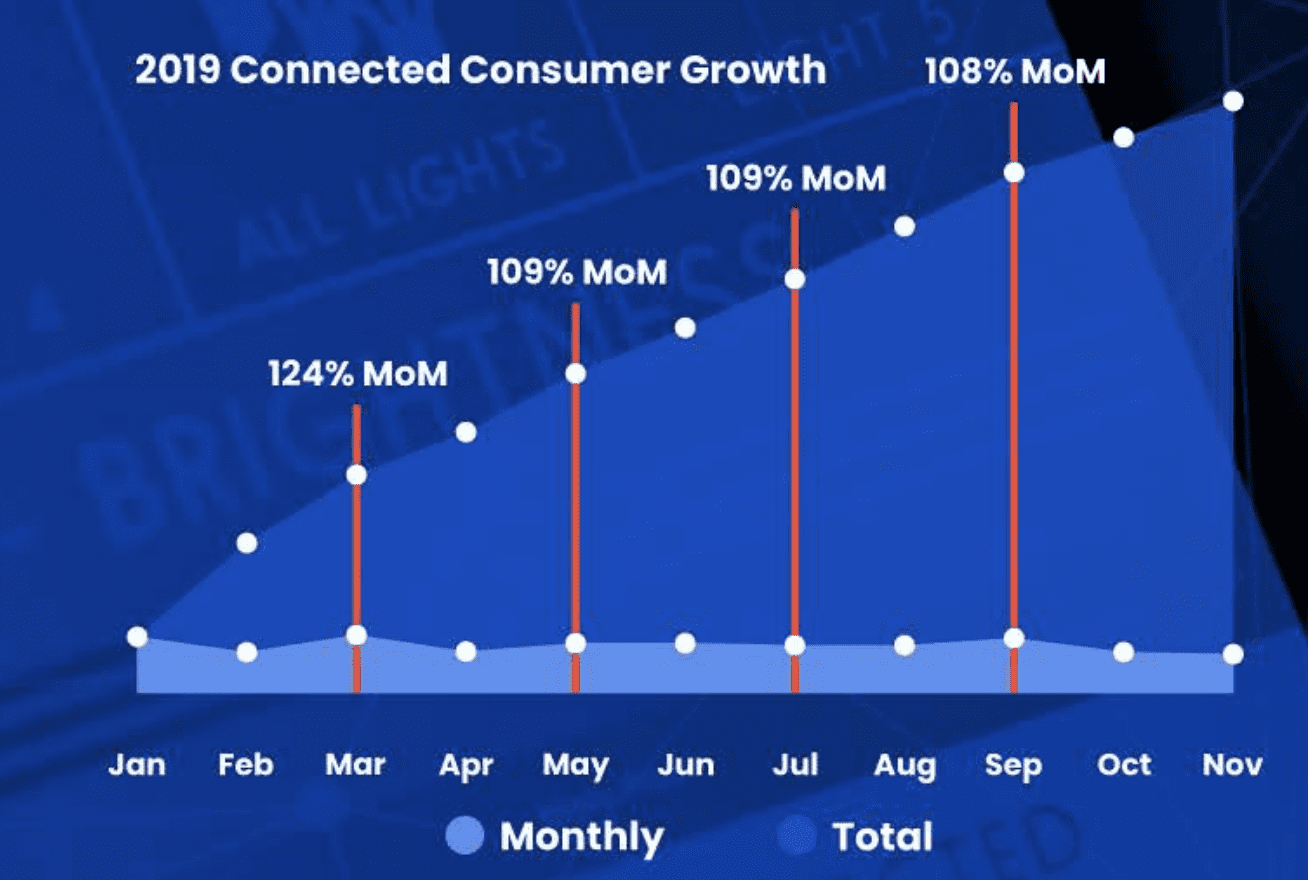Fuel campaign performance with laser-focused targeting

Now that internet connectivity is found in everything from cars to thermostats and refrigerators, what does the connected consumer experience actually look like today? Are these cloud-based appliances dramatically impacting how brands interact with their newly connected customers, or has the customer journey largely remained unchanged?
On the eve of CES 2021, we wanted to revisit our past insights, which you can download here. To learn more, we turned to InMobi Pulse.
The InMobi Pulse team reviewed new user trends for each category and several brand-specific products within each. For those specific brands, we also looked at the frequency of user engagement and app install/uninstall activity from January through November 2019. The InMobi Pulse team also performed market research to understand why connected device users are engaging with brands as well as their attitudes for future adoption.
Our theory was that not only is the number of connected consumers increasing, but they are engaging with more products (connected home, wearables, cars, security systems, appliances, etc.) as well.
Not only is the number of connected consumers increasing steadily, the growth is happening across all categories; Connected Home, Car and Personal Wearables.
The top five months of growth with categories

Today’s consumer is increasingly embracing and easily accessing the benefits of widespread connectivity right at home. Thanks to the rise of brands and offerings like Nest and Amazon Alexa, the connected home is a burgeoning space. In fact, between January and November 2019, month-over-month new users of connected home apps varied between 80% and 132%.
When are sales and service requests the highest? Connected home consumer app engagement follows the Spring and Summer home buyer trends: peak in March, then steady until late August. January is also a strong month for new users, which are most likely those receiving connected devices during the holiday season.
Let’s break down the connected home by category:
How does this app data compare to our survey results? Amazon Alexa boasts the highest awareness and usage. Google Home has significantly higher awareness and usage among those 18-24 years old, while Samsung Family Hub has significantly higher awareness among those 45-54.
Ring, followed by Nest, has the highest future consideration among those aware of those brands, while SimpliSafe and My Solar City have the lowest. Overall though, there is a large share of untapped usage, especially among those aged 45-54.
What is the actual customer experience like in this space? Consumers largely use connected home devices to monitor safety and security and because it makes their life easier. A directionally higher proportion of women find the products easy to set up and use. Those that do not use a connected device for their home cite privacy concerns and price as barriers to adoption.
For more insights, be sure to download your copy of the InMobi Connected Consumer Report 2020 today!
Interested in seeing how app usage in the connected car arena compared to auto app usage overall? Check out this blog post for more information.
What do you think the future holds for the connected consumer? Let us know on social media! We’d love to hear your thoughts on LinkedIn or Twitter.


Register to our blog updates newsletter to receive the latest content in your inbox.